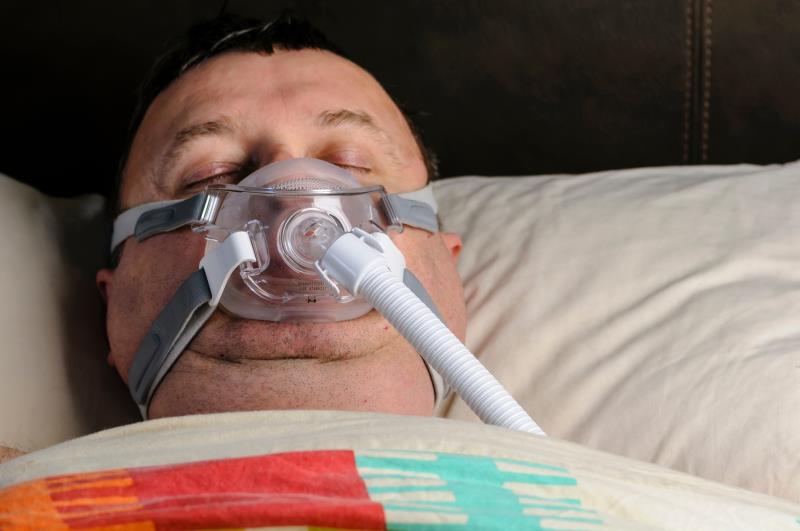NIV for obesity hypoventilation syndrome with/without severe OSA: Yay or nay?





Noninvasive ventilation (NIV) may not be the most suitable alternative for managing obesity hypoventilation syndrome (OHS) with or without severe obstructive sleep apnoea (OSA), according to subanalyses results of the Pickwick trial presented at ATS 2020.
In one subanalysis, the effect of long-term NIV was similar to lifestyle modifications. The study was conducted among stable ambulatory patients with untreated OHS but without severe OSA (n=98) from the Pickwick cohort. Participants were randomized 1:1 to receive NIV or lifestyle modification (control arm). [ATS 2020, abstract 485]
During a median follow-up of 5 years, mean hospitalization days/year were similar between the NIV and the control arms (2.7 vs 2.6 days, adjusted rate ratio [adjRR], 1.07, 95 percent confidence interval [CI], 0.44–2.59; p=0.88).
In the intention-to-treat analysis, the incidence of cardiovascular events was similar between the NIV and the control arms (21 percent vs 23 percent; hazard ratio [HR], 0.96, 95 percent CI, 0.40–2.30; p=0.93). Mortality rates were also similar between groups (19 percent in each arm; HR, 1.07, 95 percent CI, 0.41–2.82; p=0.89).
The per-protocol analysis also revealed no significant between-group difference in the cumulative incidences of cardiovascular events (HR, 1.21, 95 percent CI, 0.43–3.41; p=0.72) and mortality (HR, 1.38, 95 percent CI, 0.50–3.79; p=0.53).
Although NIV has been shown to be an effective treatment alternative for OHS with severe OSA, the current findings appear to suggest otherwise for those without OSA, noted the researchers. “NIV and lifestyle modification had similar long-term hospitalization days/year,” they pointed out.
As such, the team called for larger studies to better establish the long-term benefit of NIV in this subset of OHS patients.
NIV vs CPAP
In another analysis of the Pickwick trial evaluating OHS patients with severe OSA (n=215), the team sought to compare the long-term cost-effectiveness of NIV vs continuous positive airway pressure (CPAP). Median follow-up was 3 years. [ATS 2020, abstract 484]
Excluding hospitalization costs, mean Bayesian estimated cost per patient/year was higher with NIV vs CPAP (€2,075.98 vs €1,219.06; mean difference, €857.6).
Although CPAP use led to longer hospital days than NIV as per mean Bayesian estimates (2.13 vs 1.89 days), CPAP was still more cost-effective than NIV, the researchers pointed out. “[The] longer hospital stay in the CPAP arm was compensated for by its lower costs. Therefore, CPAP is preferred to NIV,” they noted.
Given the better cost-effectiveness of CPAP compared with NIV, the former should be preferred over the latter for OHS patients with severe OSA, said the researchers.
Taken together, the findings suggest that NIV is no better than lifestyle modifications, and is edged by CPAP cost-wise. The findings of both subanalyses appear to indicate that NIV might not be the appropriate alternative for OHS patients with or without severe OSA.